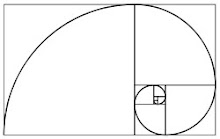
One of the joys of comics is the thrill of discovery - sifting through piles of dusty genre material in the hope that work of value will peek to the surface, whether hiding in longboxes, second-hand book shops, op-shops or down the back of the couch. It’s a similar impulse to second-hand record shopping - eyeing up half-remembered, arcane looking album covers, thinking to yourself, “Is there something in this?”. More than often you’ll come up short, but with enough persistence you might end up succumbing to the “op-shop bends” - that stomach-churning state of sudden excitement only experienced when you’ve stumbled upon something
totally fucking rad.
I felt this in way late December 2009 - when rifling through Balmoral’s op-shop, checking out a framed print of Duchamp’s
Nude Descending A Staircase hanging above a clothes rack, I picked up a cardboard box of around twenty-five
Oink comics. I instantly clicked that I’d struck a goldmine - a large collection of English cartoonist Banx’s uncollected
Burp comic strips, plus extra assorted misc by the British cartooning guru, mixed in between generally undistinguished strips of a smelly nature. That might be a bit harsh -
Oink was an interesting breed of English comics publication put out in the late eighties, focusing on scatalogically themed humour featuring characters like Pete and His Pimple, Tom Thug or Harry The Head (drawn by the Fall’s Marc Riley!). Kind of like a punky precursor to
Viz or
Toxic but, “y‘know, for kids“. There’s some good bits here and there (notably, strips by Tony Husband) but nothing holds a candle to Banx’s psychotically violent and hilarious page works. A good litmus test of funny comics is if you can sit around with your mates and some beers and they make you laugh out loud -
Burp passes with an extra gold star for great drawings.
Burp’s premise is simple – it stars a cheerful bug-eyed alien named Burp who has sentient internal organs that he can pull out of his body and put to various uses. Each of his organs is a cartoon character that he can chat to, hang out with, etc. Landing his spaceship in late 80s England, Burp is unfamiliar with Western social codes - much humour is achieved through his innocently disgusting and destructive interactions with the British populace. On top of that, there are gags involving alien technology and pets, all complemented by Banx’s ear for witty dialogue. It adds up to a sustained light-hearted riff on Cronenbergian body-horror, with surprisingly abject and brutal events occurring throughout, intensifying the hilarity. For example, in a sequence involving Burp inventing a teleportation device that can teleport fast food directly into your stomach, he unwittingly teleports five gallons of tomato ketchup straight into the brain of his unsuspecting human test subject - with explosive results. Other strips show Burp starting a band with his organs, getting kidnapped by his own liver, performing brain surgery on Ronald Reagan, etc. A strip depicting the use of internal body deodorant (“Beauty isn’t just skin-deep, readers!“) recalls Jeremy Irons in
Dead Ringers asking why no one has staged a beauty contest for inside of the body. Later into
Oink’s publication, Banx switched up the milieu - taking Burp into deep space in an exploratory and sometimes poetic sequence of strips.
As revolting as these developments might be, it’s Banx’s masterly skills as a draftsman that really hammer home the depravity lurking at the heart of
Burp. A British cartoonist in the tradition of Ronald Searle or Ralph Steadman, Banx’s lines zoom and splatter across the page - scratchy angular line work with stark chunks of black that pop. His rounded character designs contrast with severe, man-made urban backgrounds. With a gift for grotesquery that calls to mind a neotonically-inclined Basil Wolverton, Banx delights in every grisly detail - body fluids flow freely, a gigantic tongue covered with bursting boils licks a skyscraper. Stink-lines are all over the place, bodies are dismembered/displaced/put back together again, disembodied brains crack wise. Morally ambivalent characters hint at insane violence while wielding huge, razor-sharp weapons out of an LSD nightmare.
Burp is totally great, thematically interesting and funny as hell. Check out a selection of
Burp strips and more of Banx’s work at his website - www.jbanx.com
Chris Cudby


















































